7.26: Melting Points
- Page ID
- 97230
 |
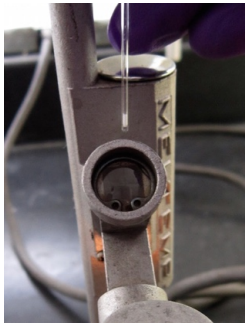 |
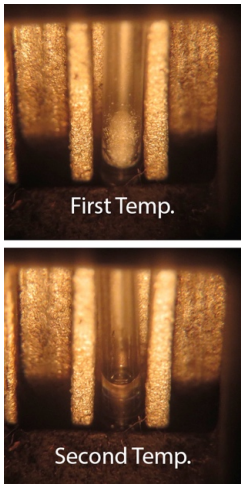 |
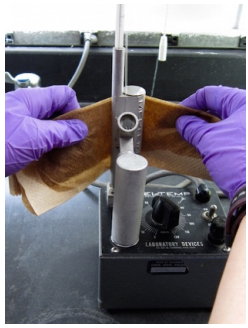 |
|
Load the sample by jabbing the open end of a capillary tube into a pile of the sample. With closed end down, drop the tube down a long hollow tube so that it hits the benchtop and packs the sample into the closed end of the tube. Load the sample to a height of \(2\)-\(3 \: \text{mm}\). |
Place a sample into a slot in the MelTemp. Turn the dial to begin heating. Heat at a medium rate to \(20^\text{o} \text{C}\) below the expected melting point. Then heat very slowly. (\(1^\text{o} \text{C}\) every 30 seconds). |
Record the temperature where the first droplet of liquid is seen (there is movement in the tube). Record the second temperature when the entire sample liquefies (the entire sample changes from opaque to transparent). Record a melting range, e.g. \(120\)-\(122^\text{o} \text{C}\). |
If another melting point trial is to be performed, cool the metal block to at least \(20^\text{o} \text{C}\) below the next melting point, by wiping it with a wet paper towel or cooling with a jet of air. |
|
Thiele Tube Variation: Attach the sample to a thermometer with a tiny rubber band, positioning the sample flush with the bottom of the thermometer. Insert the sample into a Thiele tube, so that the sample is near the middle of the tube. |
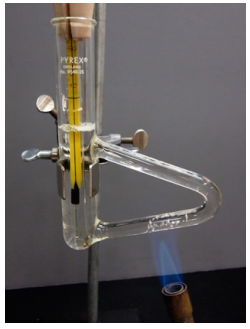 |
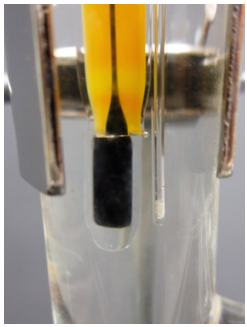 |
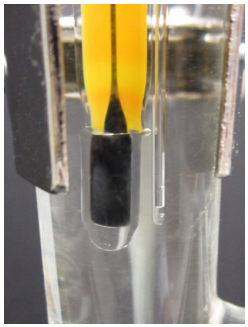 |


